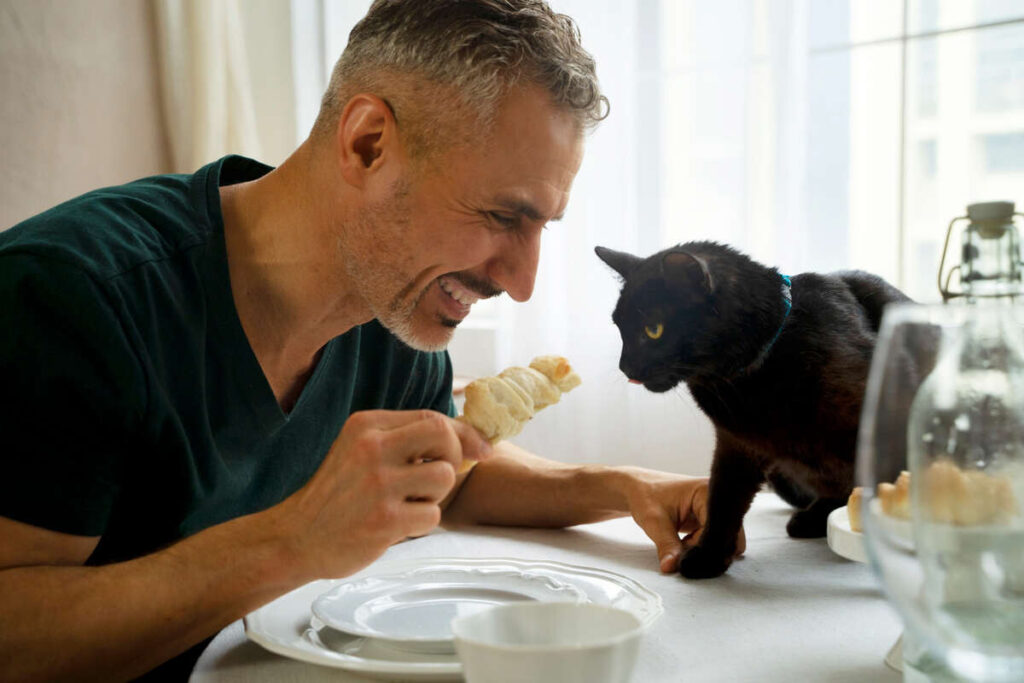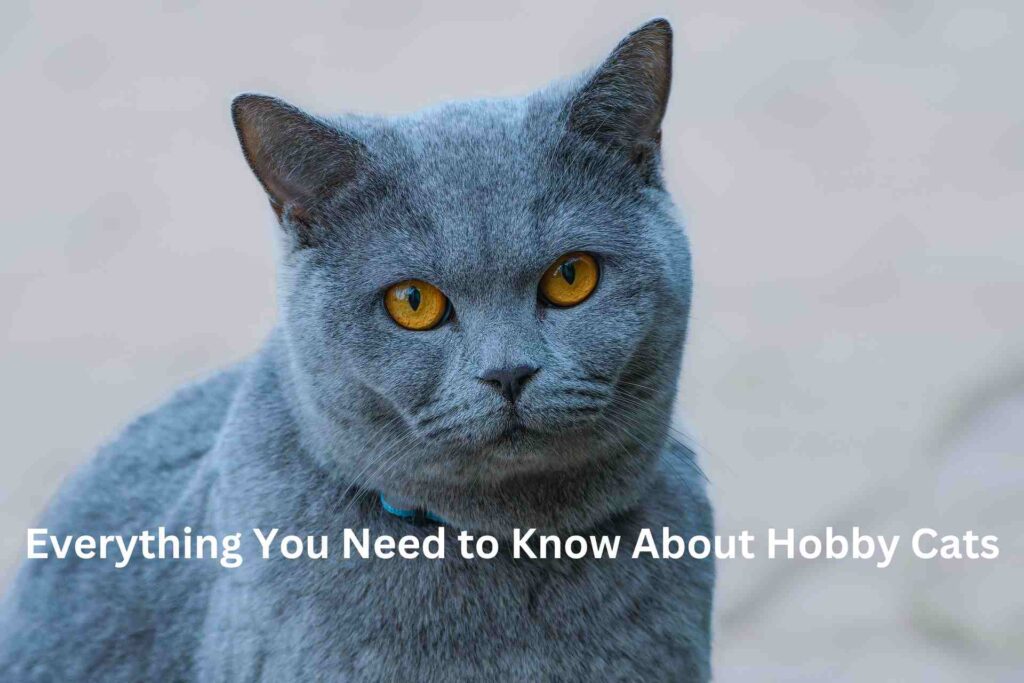
Being a cat owner comes with its responsibilities, such as feeding your feline friend a proper diet for a long and happy life. Unlike dogs, kitties are obligate carnivores which means a cat’s diet should consist primarily of meat. But as a “cat person,” you are probably wondering which cat food is the best for your cat’s diet and health needs.
Rest assured that this guide will cover all types of cat food that are suitable for your furry friend. It contains information about each type of food, the recommended serving sizes, and tips on what to look for while shopping. This article is helpful for both first-time cat owners and experienced “cat people”.
Types of Cat Food
When it comes to feeding your furry friend, there are three options: dry kibble, wet food, and raw food. Each option has its unique pros and cons that you need to consider about your cat’s needs and preferences.
Kibble
Kibble is a type of cat food that has the most availability. The reason that many people use these as a form of feeding their cats is because it is easy and affordable, plus the cats can snack throughout the day. That said, there are some benefits and drawbacks to this option.
Perks of Kibble:
Accessibility: Since there is no need to refrigerate the food, cats can eat when they want to.
Cost Effective: Kibble is cheaper compared to wet food.
Promotes Dental Hygiene: The crunchy texture aids in reducing tartar buildup and helps your cat’s overall dental health.
Cons of Kibble:
Low Nutrition: Water intake from cats is usually low which can lead to dehydration when fed dry food.
Inconsistent Quality: Some kibbles rely on fillers and preservatives, leading to a nutritional deficit in cat food.
Canned Cat Food
Wet cat food, or canned cat food, has higher moisture levels and is generally more accepted by cats. This is a great option for cats who do not drink enough water and for those who need to gain weight.
Why Wet Cat Food is Beneficial:
Ideal Source of Hydration: Aids in keeping your feline friend hydrated which aids in maintaining a healthy kidney and urinary system.
Better Taste: Wet food is more pleasing to cats which can be beneficial for picky felines.
Ideal for Weight Management: Wet food is usually more protein-dense which is good for cats requiring lower-carb diets.
Weaknesses of Wet Cat Food:
Costlier: Wet food, especially branded items, is typically more expensive than dry food.
Perishable: Refrigeration is needed after opening wet food and should be consumed within three days.
May Cause Dental Problems: Wet food does not provide any dental benefits that dry food does.
3. Homemade Cat Food
For many “cat people” who want to feed their pets a natural diet, raw cat food is very appealing. It can be bought from pet shops or made at home.
Why Raw Cat Food is Beneficial:
Non-Processed: Raw food reproduces the diet of a cat’s prey providing all protein and nutritious essentials.
Improved Coat and Skin Health: An increased number of cat owners are noting improvements in the coat quality and skin health of their pets after adopting a raw food diet.
Higher Energy Levels: Cats seem to have more energy as well as improved general health with some of them being fed raw food.
Disadvantages of raw feeding include the below:
Safety Concerns: There is always a chance of bacteria, salmonella, or even nutrition imbalance when raw food is not appropriately prepared leading to zero nutrition value at all.
Expensive: Typically, raw food diets cost more in comparison to other cat food options.
Preparation Time: Preparing raw food can be incredibly difficult and time-consuming at times, especially if the dietary needs of the cat are to be fulfilled.
Essential Ingredients in Cat Food:
Being a cat person, you have to know everything regarding the diet of your feline friend. Cats require certain nutrients that most animals and humans do not.
Protein
Cats are obligatory carnivores and as such, they have to be provided with protein-based diets. Protein gives the essential amino acids that every cat needs to build muscles, repair tissues, and provide overall energy. Animal Proteins such as chicken, turkey, beef, and fish should be included as ingredients for the cat food.
Taurine
Cats can be given taurine as a dairy solution. It is also known as an amino acid and is crucial in reproduction, vision, and heart health. A taurine deficiency can have severe consequences on one’s health, and this is one of the many reasons why huge dietary regulations have to be set in place for breeds of cats, with special emphasis on calling out the importance taurine has for cats.
Fats
Healthy fats which include animal fat from sources such as chicken or fish can significantly provide great energy, coat care, as well as the absorption of vitamins A, D, E, and K which are all key vitamins for cats.
Carbohydrates
Although cats are flexible in the carbs they consume, carbs should still be moderated. Fillers like corn, soy, wheat, and the like should be avoided at all costs as they do not give cats any nutritional value, and rather lead to obesity.
Vitamins and Minerals
To retain proper health, cats greatly benefit from minerals and vitamins on an A to E and Calcium to magnesium spectrum. Each of these contributes to bone health, immune support, and so forth.
Advice on putting together your cat’s nutrition plan?
When formulating a nutritional plan for your cat, consider its age, activity level, weight, and even its health. The feeding instructions indicated on the cat food labels can be used as guidelines; however, you can tailor them to better suit your cat.
Kittens
Growing felines consume a lot of food because they have high energy needs. Until a kitten reaches six months, they require four meals a day to meet their energy requirements.
Adult Cats
Most fully grown felines are expected to have two meals a day. However, they can consume smaller meals throughout the day as long as their overall calorie intake meets their requirements.
Senior Cats
Older felines require fewer calories, however, their nutritional requirements change as they get older. Make sure to select a cat food that has the right quantity of protein and fat.
Homemade Cat Food: What You Should Know
Some cat owners prefer to make their own food for their cats instead of buying commercial brands. This is a good approach but can be very difficult to achieve a balanced nutrition without planning. A cat’s diet must be a blend of protein, fat, vitamins, and minerals, and the diet must be adequately complete. Before moving to homemade food, it is very important to speak with a veterinarian or pet nutritionist.
Ingredients That Are Commonly Found in Cat Food, Which Can Be Harmful
When shopping for cat food, it is important to know which ingredients are harmful and should be omitted to maintain a healthy well-balanced diet. Be cautious of:
Artificial Colors or Preservatives: These have no nutritional benefit and can be harmful to your cat’s health.
Conclusion
As a conscientious cat owner, it is important that you select the best food suited for your cat’s health and nutrition. Dry kibble, wet, or raw; be sure that the type of food you choose is high in quality and fits your cat’s diet. Be keen on the composition of the food, and make sure your cat has access to clean drinking water at all times.
Always bear in mind that there is more to feeding your cat than just filling them up. With every proper nutritional choice you make, you enable your cat to live a long and happy life. Making the proper decisions regarding your cat’s diet means you are strengthening your relationship with your cat and ensuring their future success.




